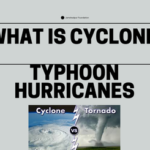India will witness a total lunar eclipse : Basics Explained

India will witness a total lunar eclipse on 8 November, the Ministry of Earth Science said. This will be the last total lunar eclipse visible from India till 2025. Also called a ‘blood moon’ or chandra grahan, a lunar eclipse occurs when the moon falls into the Earth’s shadow.
LEARNING FROM HOME/ WITHOUT CLASSES/ BASICS
An eclipse happens when a planet or a moon gets in the way of the Sun’s light. Here on Earth, we can experience two kinds of eclipses: Solar eclipses and Lunar eclipses.
Lunar Eclipse
During a lunar eclipse, Earth gets in the way of the sun’s light hitting the moon. That means that during the night, a full moon fades away as Earth’s shadow covers it up.
The moon can also look reddish because Earth’s atmosphere absorbs the other colors while it bends some sunlight toward the moon. Sunlight bending through the atmosphere and absorbing other colors is also why sunsets are orange and red.
A solar eclipse occurs when the moon passes in a direct line between the Earth and the sun. The moon’s shadow travels over the Earth’s surface and blocks out the sun’s light as seen from Earth. A solar eclipse happens when, at just the right moment, the moon passes between the sun and Earth. Sometimes the moon only blocks part of the sun’s light. This is called a partial solar eclipse.
Other times, the moon blocks all of the sun’s light. This is called a total solar eclipse. As the moon blocks the sun’s light, it casts a shadow on part of the Earth.
The moon’s shadow creates a trail as Earth rotates. This trail is called the path of totality. If you want to experience total darkness during an eclipse, you have to be in the path of totality.
The moon’s shadow has two parts: a central region (umbra) and an outer region (penumbra). Depending upon which part of the shadow passes over you, you will see one of three types of solar eclipses:
- Total – The entire central portion of the sun is blocked out.
- Partial – Only part of the sun’s surface is blocked out.
- Annular – Only a small, ring-like sliver of light is seen from the sun’s disc.
If the umbra passes over you, the entire central portion of the sun will be blocked out. You will see a total solar eclipse, and the sky will darken as if it were night time. During a total solar eclipse, you can see the sun’s outer atmosphere, called the corona. In fact, this is the only time that you can see the corona, which is why astronomers get so excited when a total eclipse is about to occur. Many astronomers travel the world chasing eclipses.
If the penumbra passes over you, only part of the sun’s surface will be blocked out. You will see a partial solar eclipse, and the sky may dim slightly depending on how much of the sun’s disc is covered.
In some cases, the moon is far enough away in its orbit that the umbra never reaches the Earth at all. In this case, there is no region of totality, and what you see is an annular solar eclipse. In an annular eclipse, only a small, ring-like sliver of light is seen from the sun’s disc (“annular” means “of a ring”).
For an ideal total solar eclipse, the earth, the Moon and the Sun should be aligned in a direct line.
Annular solar eclipse:
When the Sun is nearest to Earth and the Moon is at or near its greatest distance, the Moon appears smaller than the Sun in the sky. When an eclipse of the Sun happens in this situation, the Moon will not appear large enough to cover the disk of the Sun completely, and a rim or ring of light will remain visible in the sky.
Total solar eclipse:
Total solar eclipses occur when the New Moon comes between the Sun and Earth and casts the darkest part of its shadow, the umbra, on Earth. A full solar eclipse, known as totality, is almost as dark as night.
During a total eclipse of the Sun, the Moon covers the entire disk of the Sun. In partial and annular solar eclipses, the Moon blocks only part of the Sun.
When Moon completely covers the disk of the Sun, only the Sun’s corona is visible. Diamond ring is a phenomenon associated with the solar eclipse when only the peripheral parts of the sun are visible and the sun looks take a diamond ring
New moon occurs when the Moon is between Earth and the Sun, and thus the side of the Moon that is in shadow faces Earth.
A lunar eclipse can only occur at Full Moon.Full moon occurs when the Moon is on the opposite side of Earth from the Sun, and thus the side of the Moon that is illuminated faces Earth.





0 Comments